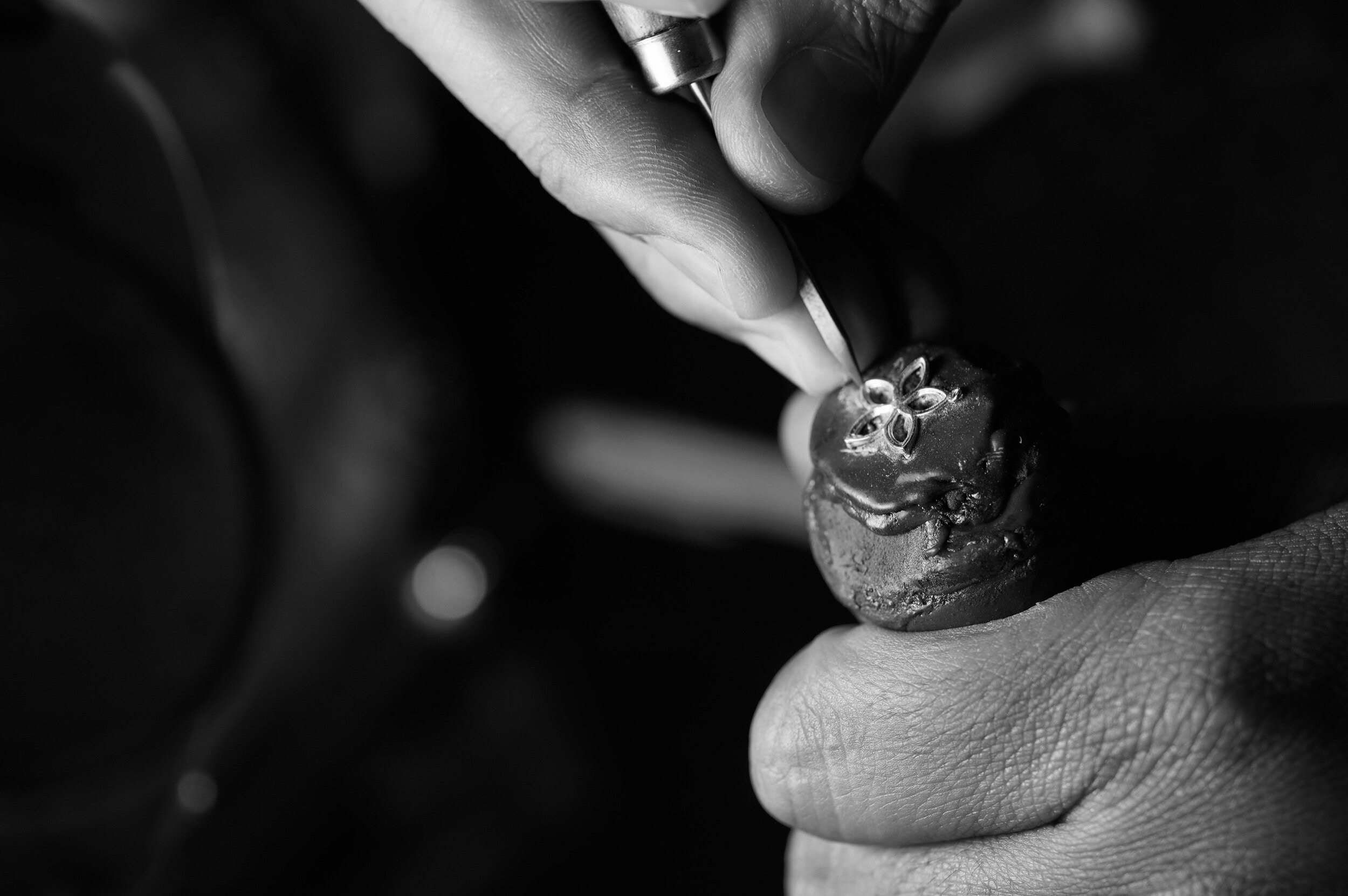The Basics: Fine Jewellery Care 101
By far, one of the questions we are asked most often is how to care for fine jewellery pieces. There are simple, holding how-tos that you can read here, but we thought that it would be valuable to address the nuances in greater detail. It is our hope that the little insights we share here (alongside the guides on our blog) will help you form a better understanding of your jewellery, and how to best care for it.
Breaking it down
One of the first things to look out for, when caring for your fine jewellery, is the different kinds of precious materials used in the specific piece. At the broadest level of categorisation, there are precious metals, and precious gemstones.
Cleaning precious metals and gemstones often require different techniques and solutions. If a piece has both precious metals and gemstones, as most jewellery do, it would be helpful to understand how each of these individual components respond to the different cleaning solutions. Additionally, if a piece comprises different gemstones, rather than a single kind, then understanding each gemstone’s distinct characteristics is recommended.
Take for example a jade bangle featuring white and rose gold metalwork embedded with moonstones and diamonds. One simple way to clean such an intricate piece, containing multiple gemstones and precious metals, would be to use a damp cloth to gently wipe off any dirt and oils that have accumulated from usage. However, more thorough cleaning would require different, more complicated techniques for each individual element.
Knowing what your piece is made of will enable you to learn the safest and most suitable way to care for your jewellery piece.
2. Complexity and Care
A Choo Yilin piece is something that can take almost six months (and sometimes more) to create -- the most complex being the Choo Yilin jade bangle. One of the main reasons why the process of creation takes so long is that there are three primary, precious components to a Choo Yilin jade piece that require diametrically different ways of handling.
There is the (i) jade piece itself, the (ii) gold metalwork, sometimes in dual-tones of rose and white, or rose and yellow, and then finally, there are the (iii) precious gemstones, embedded carefully within the intricate metalwork.
One example of the intricacies involved in the creation of such a piece is when we’re looking to combine all three elements. Each of the materials require entirely different types of tools and workmanship; consequently, combining each of them together requires an inordinate amount of care, skilled artisanship, and a considerable amount of time.
As the intricacies and number of components in a piece of fine jewellery increases, the amount of work involved in creating (and often, caring for) it does too.
3. The Correlation of Care vs. Cost
This may seem a little counterintuitive, but our research has suggested there is no direct correlation, positive or negative, between how expensive a piece is and the amount of care required.
A very inexpensive piece could be extremely high maintenance; equally, a very complex, expensive jewellery piece could require similarly high maintenance for very different reasons.
We thought that this was important to address as a significant number of people believe that if something is priced highly, the care needed would be inversely proportional to the price. In other words, the belief is that the more money is spent on a jewellery piece, the less care it requires.
This is sometimes the case, but not always. For example, in pieces with a similar design whereby one is created in 9KT gold vs. the other in 18kt gold, the latter should require less maintenance because the higher percentage of gold would make the metal more inert to the elements and require less polishing. However, if you are looking at an extremely intricate and complex fine jewellery piece that uses dual-coloured gold in fine-filigreed metalwork, together with multiple kinds of gemstones (jade, diamonds and pearls etc), then it would be reasonable to expect that the piece would require a certain amount of care.
Perhaps a close analogy would be a couture gown, or even a bespoke kebaya. Because of the inherent value of the materials used (exquisite hand-woven lace, fine silks etc), and how time-consuming and labour-intensive the process of creation is, a couture gown with hand-sewn crystals and 3D embellishments is almost always priced high. It nonetheless requires a significant investment of care.
4. Jewellery Care: Storage, Usage, Cleaning
When we speak about jewellery care, there are typically three aspects that we need to be aware of -- (i) the storage of the pieces, (ii) the use of the pieces, and (iii) the cleaning of the pieces. It is important to pay attention to all three aspects.
A common misconception about usage is that the less a jewellery piece is used, the more pristine it will be. This is not necessarily true. Here, we briefly explain why sometimes, wearing is caring.
Conclusion
In our ten years of supporting customers to care for their fine jewellery, we have learnt that the method to best care for pieces does vary from person to person. A routine that works for someone may not work for another. We hope that understanding these basic principles of jewellery care will help you get a better handle on discovering what works best for you and your pieces.
Stay tuned as we continue to dive deeper into the world of fine jewellery, sharing more tips, recommendations, and insights. If there’s anything else you would like to know regarding caring for any of your fine jewellery pieces, please let us know at hello@chooyilin.com.




